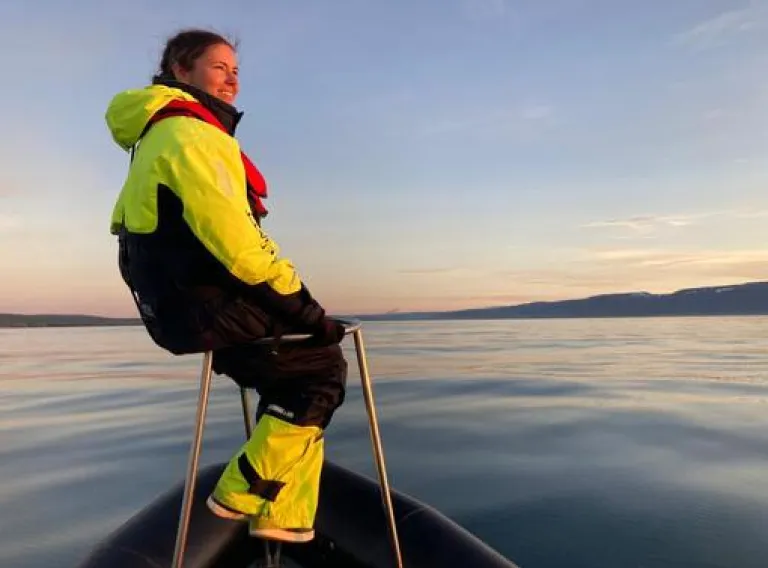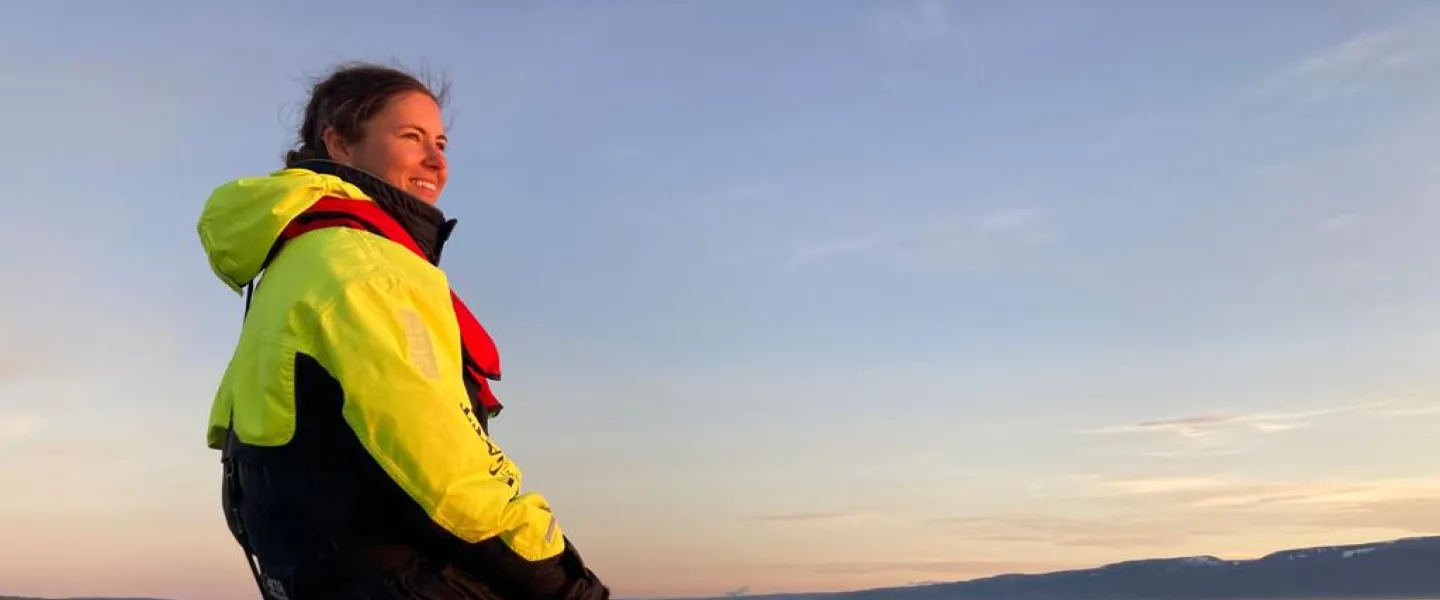Askja
Room 132
Doctoral candidate: Caroline Elisabeth Haas
Title of thesis: Acoustic behaviour and spatiotemporal occurrence of northern bottlenose whales in the Nordic Seas
Advisor: Dr. Jörundur Svavarsson, Professor Emeritus at the Faculty of Life and Environmental Science, University of Iceland
Other members of the doctoral committee:
Dr. Paul Wensveen, Research Specialist at the Westman Islands Research Centre, University of Iceland
Dr. Patrick Miller, Professor at the School of Biology, University of St Andrews, Scotland
Dr. Sascha Hooker, Professor at the School of Biology, University of St Andrews, Scotland
Opponents were
Dr. Ellen Garland, Reader at the School of Biology, University of St Andrews, Scotland
Dr. Denise Risch, Senior Lecturer at the Scottish Association for Marine Science/University of the Highlands and Islands, Scotland
Dr. Guðbjörg Ásta Ólafsdóttir, Director of the Research Centre in the Westfjords, University of Iceland
This is a joint doctoral degree with the University of St Andrews, Scotland.
The doctoral defense took place at the University of St. Andrews on September 23rd.
Abstract
Northern bottlenose whales (Hyperoodon ampullatus) are echolocating beaked whales found in arctic and subarctic waters of the North Atlantic. Their offshore distribution and deep-diving behaviour make them challenging to study visually, thus knowledge gaps remain on the species’ behaviour and distribution. This thesis advanced our understanding of northern bottlenose whales’ acoustic behaviour and their occurrence in the Nordic Seas. It combined animal-attached sound and movement tag data and passive acoustic monitoring (PAM), together with visual observations and oceanographic data. Specifically, chapter two describes the acoustic characteristics and contextual production of two types of rapid click trains, buzzes and rasps. The results revealed that these click trains are acoustically and contextually distinct, with buzzes associated with foraging and rasps with communication. Classification of buzzes and rasps can be applied also to PAM data to infer animal behaviour, and this was applied in a case study on northern bottlenose whale inshore acoustic behaviour in chapter three. The identification of rasps but not buzzes in inshore recordings, in conjunction with behavioural observations and further inshore sightings, pointed towards a shelter driven movement of bottlenose whales into coastal waters. Occurrence and distribution drivers within offshore waters are then addressed in chapter four using long-term bottom-moored hydrophone data. The results showed a year-round occurrence of northern bottlenose whales in the Nordic Seas, and seasonal variations in distribution were linked to oceanographic variables indicative of prey availability. Acoustic detections were only temporarily low from July to September, discounting the long-standing seasonal north-south migration hypothesis but instead supporting potential short-term skin maintenance migrations. Chapter five investigates the species’ detection probability and discusses the impacts of click characteristics, animal behaviour and duty-cycle choice. The estimated acoustic detection functions have important implications for PAM studies and constitute a first step towards passive acoustic density estimation of northern bottlenose whales.
About the lecturer
Caroline Elisabeth Haas was born in 1994 in Wels in Austria. She graduated with a Bachelor of Science degree in Biology from the Julius-Maximilians University Würzburg, Germany, in 2017 and obtained a Master of Science degree specializing in Behavioural Biology from Georg-August University Goettingen, Germany in 2020.
Her main motivation to study biology was her keen interest in animal communication, a topic which she researched in wolves and dogs, various species of primates, harbour seals and, for her doctoral studies, in northern bottlenose whales.

Share
Buses 14, 1, 6, 3 and 12 stop at the University of Iceland in Vatnsmýri. Buses 11 and 15 also stop nearby. Let's travel in an ecological way!
